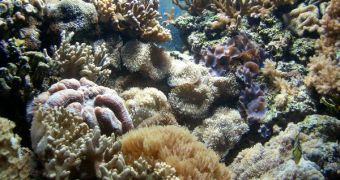Experts believe that, by studying the fossilized corals inside reefs, they could get more information about how sea levels changed since the last Ice Age, some 20,000 years ago. They add that the Great Barrier Reef could be the optimum starting point for such an investigation, given the scale of the reef, and also its rich history and abundance of species it contains. The study is already set up, and an international collaboration of researchers will gather samples from 40 sites across the reef, over a period of 45 days, the BBC News reports.
Just like trees grow rings showing their age, coral reefs also record minute variations that occur in their ecosystems over time. In addition to the changes that occurred in sea levels and temperatures, the marine biologists will also be able to gather more data on how the oceans as a whole looked like all those thousands of years ago. “We can then analyze those rings to build up a very detailed picture of what the ocean was like when they were forming, including temperature and salinity,” British Geological Survey (BGS) marine geology team leader Alan Stevenson explains.
Due to its age, estimated to be of at least half a million years, the Great Barrier Reef is very likely to contain the exact data the researchers are looking for. “Over this time, parts have died out […] as sea levels change. Basically, corals drown when it becomes too deep for them,” Stevenson adds. “We will core into a 'time capsule' of sediments that holds information on the environmental evolution of the reef since the last glaciation some 20,000 years ago,” BGS marine ecologist Dan Evans shares.
Studies of other ecosystems hint at the fact that, since the last Ice Age, three spikes in sea levels were recorded. Researchers believe that these events happened 9,000, 13,800 and 11,300 years ago, and are looking for confirmation of this hypothesis in the coral study. In addition, learning more about how climate caries over time could provide more information for computer models that are currently simulating the future of our planet. This study is a part of the Integrated Ocean Drilling Program (IODP).

 14 DAY TRIAL //
14 DAY TRIAL //